|
|
 Jen Jen |
 |

|
|
Things I Learned from Falling
Claire Nelson
I read this in preparation for our upcoming fall retreats. The book is the nonfiction account by Claire Nelson of what happened when she went hiking alone in the Joshua Tree National Park near Palm Springs, California (AKA the desert), inadvertently got off the track, fell 25 feet, broke her pelvis, and had to wait 3 nights/4 days for rescue. What the author learned from that experience is worth all of us taking note of—BE CONNECTED TO OTHER PEOPLE. The author’s narration alternates between what is happening to her body and mind while lying in wait and past life experiences. The author had a video camera with her and made some video diary recordings while she lay in wait. For those so inclined, the video recordings are available on YouTube (I wouldn’t watch them until after you’ve read the book.) I thoroughly enjoyed the book, in part, perhaps, because I knew there would be a happy ending, or at least a living ending.
|
| |
|
 |
|
Poison for Breakfast
Lemony Snicket
Lemony Snicket is the author (yes, a pseudonym) of the children’s book series Series of Unfortunate Events as well as All the Wrong Questions. Snicket’s newest book, Poison for Breakfast is for adults or children, it’s not really clear, and honestly, I don’t care (for those of you wondering, there’s nothing in Poison that a child reader couldn’t or shouldn’t read.) The protagonist of the story wakes up one day and reads a note left for him saying that he’s had poison for breakfast. He spends the rest of the day trying to solve this mystery, hopefully before he dies of the poison. At first, while listening (I listened to this on libro.fm which is an excellent way to experience this book – it’s narrated by Patrick Warburton), I thought, “This has the feel of Unfortunate Events, but it’s kind of rambly” and then I realized, OH that’s the schtick of it. I highly enjoyed it and in fact, I plan to re-read (or re-listen) to it, just for the pure pleasure of it. For those unfamiliar with Lemony Snicket, the writing is deceptively simple, engaging, and filled with dark humor, which you might expect for someone who wrote a children’s 13-book series of unfortunate events. Admittedly, it’s not for everyone, but that’s the fun of reading isn’t it? |
| |
|
|
|
|
|
 Sally Sally |
|
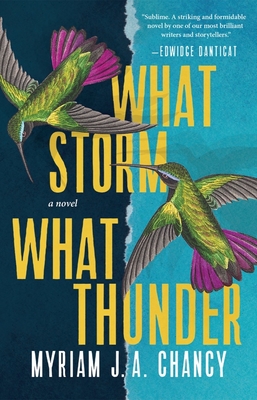
|
 |
What Storm What Thunder
Myriam J.A. Chancy
In 1998, I went to Haiti on a mission trip, and it was life-changing. Haiti, the poorest county in the Western Hemisphere, is full of contrasts. Great natural beauty and urban slums; soul-grinding poverty and wealth and privilege; opulent Catholic cathedrals and small voodoo churches.
All this was the backdrop of a 7.0 magnitude earthquake which shook Port-au-Prince, the country’s capitol, near the end of a hot day in 2010. Myriam Chancy weaves together the stories of ten people affected by that earthquake. The ten were all connected in some way, by ties of family or friendship. Ma Lu, an old woman selling produce in the market; her estranged son, Richard, who abandoned his family years earlier; Anne, the daughter Richard left behind; Sara, driven mad by the deaths of her children in the earthquake; and a number of others. As their stories are told, we see the dysfunction of the government, the prevalence of sexual violence against both men and women, despair, and resilience. The novel is beautifully crafted and written.
I began this book the evening of July 14, the day Haiti’s president was assassinated. On August 14, before I wrote this review, another earthquake struck Haiti, this one with a magnitude of 7.2. I am in despair over events and conditions in Haiti. And yet, I am reminded how literature helps us become citizens of the world, sharing the experiences of our fellow humans, no matter how difficult that might be.
Note: This book will be released on October 5.
|
| |
|

|
|
Poet Warrior: A Memoir
Joy Harjo
After Jen read this book, she passed her copy along to me and, in the nicest way possible, began nagging me to read it. I’m so glad she did and that I did! Joy Harjo is the poet laureate of the United States, and this is her second memoir. In an impressionistic fashion, she shares experiences from her life and influences on her writing. Poetry and song are interspersed with prose, making this an unusual and beautiful book. As with all performance art, it has to be experienced to be appreciated. So, as Jen nagged me, I nag you to pick it up. |
| |
|
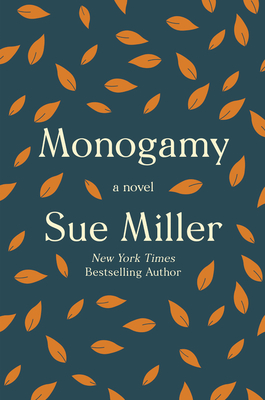 |
|
Monogamy
Sue Miller
This was the final book that the Sister Wolf Group discussed this summer, and it was the only one I hadn’t previously read. It’s a well written and elegantly constructed story of a long and seemingly happy marriage. You know from the book flap that the husband dies suddenly and that as the wife begins to grieve, she discovers he had been having an affair. Her name is Annie, and her grief is sidetracked by this betrayal. She thought she knew Graham, her husband, and knowledge of his affair caused her to question the life she thought they had built together. Their family included Graham’s son from his first marriage, the daughter they had together—and Graham’s first wife, Freida. While she continued to love Graham, she left him when she could no longer tolerate his infidelities. She and Graham remained friends, and she and Annie were friends as well. The dynamics of this family, Annie’s memories of her life with Graham, and the hurt she felt when she discovered his affair, form the bulk of the book. The effect of family secrets, the nature of memory, and the power of love are explored within a moving story. |
| |
|

|
|
The Heron’s Cry
Ann Cleeves
The Heron’s Cry is the second book in Ann Cleeves’ latest series, featuring detective Matthew Venn. Venn is called to investigate the murder of Dr. Nigel Yeo. On the surface, Yeo seemed an unlikely murder victim. His daughter adored him, and he seemed to be a good man and genuine public servant. His cause of death was particularly gruesome—he was found in his daughter’s studio, stabbed with a shard of glass from one of the vases she had created. And then the body of another man was discovered, killed in the same way. The plot of the book is tightly constructed, and the characters are carefully drawn, each complex and flawed in their own way. This is one of those, “I’ll read just one more chapter before I turn out the light” books, and well worth a sleepy morning or two. |
| |
 |
 |
 |
|
|

Ann |
|

|
|
Waterfall
Mary Casanova
Waterfall is Mary Casanova's third book in a trilogy written about life in the Rainy Lake area in the early 1920s. It is her first book written for an adult audience. The main character, Trinity Baird, has just returned to her family's island in Rainy Lake after being institutionalized for two years. The reason that Trinity was sent away is somewhat vague. It was not unusual in the early twentieth century for young girls and women to be institutionalized for many reasons such as anxiety, pregnancy outside of marriage, disobedience, or simply being a non-conformist. Trinity is conflicted about her return to the island. She loves the island and the natural world. She wants to build her strength and sense of self, but Trinity fears displeasing her parents and getting sent back to the institution. Her happiest times are spent in her cabin studio, where she can express herself through her paintings. Trinity works to make her goal of returning to Paris to study painting a reality but encounters many obstacles on the way. Historical people and events woven throughout the story give readers a sense of the area and the times. I enjoyed reading Waterfall. If you enjoy historical fiction, especially stories about Minnesota, you won't want to miss this book.
|
| |
|
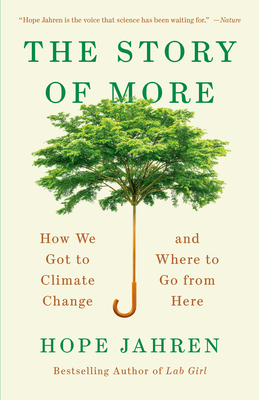 |
|
The Story of More:
How We Got to Climate Change and Where to Go from Here
Hope Jahren
Hope Jahren is a scientist who was born in southern Minnesota in 1969. Throughout The Story of More Jahren describes many ways lifestyle and consumption in the United States and other wealthy countries have changed since 1969 and how the environment has been negatively impacted. Jahren shares her extensive scientific knowledge in a way that is informative while being understandable. The book is divided into four sections: Life, Food, Energy, and Earth. The Appendix discusses actions that we can take as individuals and society to protect the environment.
Along with scientific information, The Story of More includes biographical information and is touching and even humorous. While Jahren’s message is alarming, she urges readers to decide on changes they can make and not to lose hope. I’m glad that I read The Story of More and would not hesitate to recommend it to others. |
|
| |
|
|
|
|

Bob |
|
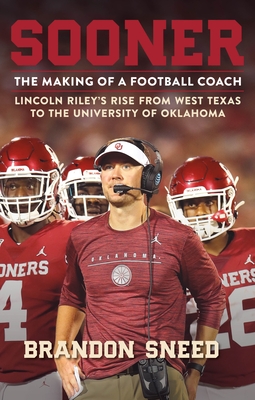
|
|
Sooner
Brandon Sneed
This was a fun book to read. If you aren’t familiar with the University of Oklahoma’s football program, you probably aren’t aware of their current coach, Lincoln Riley. His rise from Muleshoe Texas to head coach at OU was really remarkable. The book takes you through the trials and tribulations of an excellent football player, injured early on in his career, who ends up coaching. So many people vie for just a few coaching jobs in the college ranks that it makes it even more impressive that he has risen not only to a head coaching job, but at a university that ranks almost always in the top 25 of the national programs for college football. Riley is a true master of the game plan and plays, but also someone who knows how to motivate his players to play their best by providing a positive attitude toward them.
Recently I was watching OU play a Saturday football game on national TV and while the team wasn’t doing as well as one might hope, Lincoln Riley did not get down on his players. He was always very positive and encouraging. Subsequently, they managed to pull off a win. When interviewed after the game, the commentator asked if Riley was disappointed in the team for not performing better. He smiled and said, “Wasn’t that a fun game?” If only all coaches were that classy.
If you’re a football fan or know of a young one, you might want to pick up this book for them. It’s only a couple hundred pages and is an easy read.
|
| |
|
 |
|
Project Hail Mary
Andy Weir
If you’re looking for sports, stop! This read is pure Sci-fi. You may recall the name Andy Weir. He wrote “The Martian,” which I reviewed in 2015 and “Artemis.” which I reviewed about 4 years ago. You probably remember “The Martian” because it was made into a popular movie, starring Matt Damon. Well, Project Hail Mary is like The Martian…only on steroids. Martian stayed within our solar system while Project Hail Mary goes to a whole different star system.
Hail Mary deals with saving the Earth from something sucking the energy away from the sun so fast that it will soon leave Earth an inhabitable rock. Interestingly enough, the hero, Ryland Grace, is a 7th grade science teacher dedicated to his students and to learning. His “adventure” requires him to tackle deep space travel (food, time shift, boredom), alien beings (not even a close resemblance to humans, communications that are musical notes and chords), and living environments that are so radically different…well you get the picture. As with the Martian, there are lots of problems to overcome but Grace tackles them head on. A fun book to read with a surprise ending. |
| |
|
 |
|
|
|

Gail |
|
|
|
|
| |
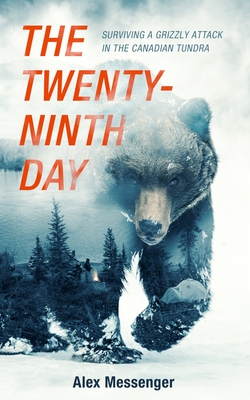 |
|
The Twenty-Ninth Day
Alex Messenger
If you are looking for an exciting adventure story, this one is for you. Alex and five friends fly by air to Lake Wholdaia in the Northwest Territories. They are dropped off with their canoes, equipment, and food. They have 42 days to paddle to Baker Lake, 600 miles north. They encounter whitewater rapids, cold, rain, wind, and ice-covered lakes, all without mishap until day 29. Alex encounters a grizzly bear! Suddenly his summer adventure becomes a life or death situation. The author now lives in Duluth and was only 17 when he started this trip. A map, pictures, and a glossary add to the enjoyment of the adventure.
|
| |
|
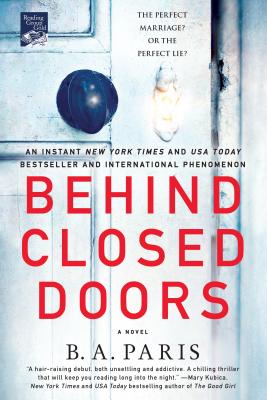
|
|
Behind Closed Doors
B. A. Paris
Are you ever curious about how people live in their homes? Is it different than the faces they show the public? Jack and Grace are known for their beautiful home and gardens. They entertain with lavish dinner parties. But why are there steel shutters on all the windows? And whenever Grace is invited to an all-girl event, Jack always calls with an excuse for Grace so she can't attend. Thrillers are not what I like to read but I couldn't put this one down This book will haunt me for some time.
|
| |
|

|
|
The Heiress
Molly Greeley
Anne deBourgh was a fussy baby. She was prescribed laudanum by the family doctor. As a young woman she was still prescribed the same medication, leaving her in a stupor most of the time. Finally she took matters in her own hands and fled to her cousin Colonel Fitzwilliam in London. This enjoyable novel is based on a mysterious character in Jane Austen's Pride and Prejudice. |
| |
|
|
|
|
|

Hannah |
|
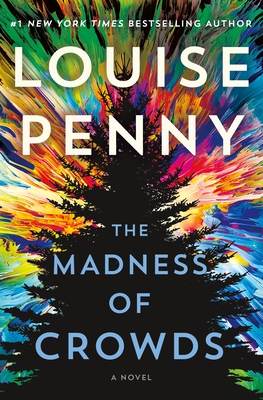
|
|
The Madness of Crowds
Louise Penny
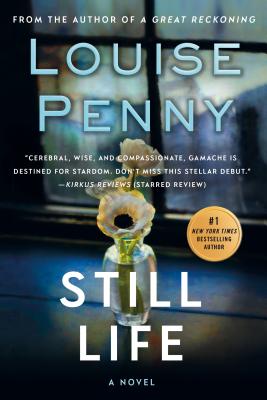 She’s done it again. People who objected to the last book being set in Paris will be happy that this one is Three Pines all the way. If you don’t know what that means, I recommend you check out the series starting with Still Life. Sally and I keep saying so, and we’ll likely say so again when the next book comes out in 2022. She’s done it again. People who objected to the last book being set in Paris will be happy that this one is Three Pines all the way. If you don’t know what that means, I recommend you check out the series starting with Still Life. Sally and I keep saying so, and we’ll likely say so again when the next book comes out in 2022.
You know from the beginning of the book that Penny has decided to set The Madness of Crowds months after the pandemic ends, although she will have to figure out next time how to resolve differences between her predictions and the way things are going. Well, Three Pines has always been better than reality. |
| |
|
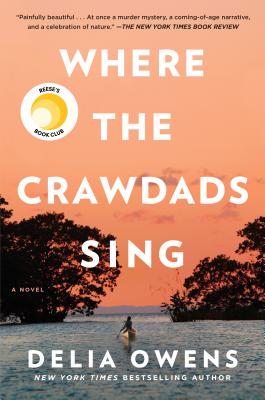
|
|
Where the Crawdads Sing
Delia Owens
I found wading into this novel like wading into a bog, in a good way. I knew before that wetlands are rich, precious places, but this book brought that fact home. We think we’ve learned a lot about isolation in these pandemic days, but we are so connected with each other! How would it be to live in a shack in the wilderness and have your family members leave one by one? And to have the nearest townspeople ridicule and reject you? If you had a loving mother during your formative years, were very intelligent and wily, and found just a couple of worthy friends there’s always a chance you could make a good life. So what excuses would we have for giving up?
|
| |
|

|
|
Educated
Tara Westover
Reading this book is a bit like coming out of the pandemic: it makes you grateful for all the things you tend to take for granted. Westover was raised in the mountains of Idaho by survivalist parents. She was theoretically homeschooled, but this just meant her mother telling her to “go school” with only a handful of books in their collection: her father actively discouraged studying. He also was a source of danger to his children, and allowed only his wife’s homemade salves and antiseptics. Despite everything working against it, Westover achieved a remarkable education, both academically and in self-knowledge. Her resilience is deeply inspirational.
Hence the title Educated: it fits her journey perfectly. However, if I hadn’t been given this book, I never would have read it. The pencil illustration on the cover is clever when you look closely, but the overall impression had me judging the book totally wrong. I would have missed a fine read. |

| |
 |
 |
 |
|
|

Lee |
|

|
|
The Lincoln Highway
Amor Towles
Emmett Watson is an 18-year-old who was released from a juvenile work farm in June of 1954. His father has just died, and the family farm is being foreclosed upon. Emmett plans to gather up his 8-year-old brother Billy and head out in his Studebaker to a better life.
Two of Emmett’s friends from the work farm, Woolly and Duchess, had stowed away in the trunk of the warden’s car that brought Emmett home, and they have other plans about where this road trip is headed.
This novel is not unlike the Adventures of Huckleberry Finn or This Tender Land in its presentation of an American epic journey. (I know... such sacrilege to compare any book to Huck Finn.)
One point that I found quite striking and worth pondering was when a character realizes that maybe every person is flawed by having “too much” of a virtue ... too patient or forgiving or hard-working or cautious or smart or...
At 640 pages, this is not a book to be read in a single afternoon, but it is worth the time one spends
|
| |
|
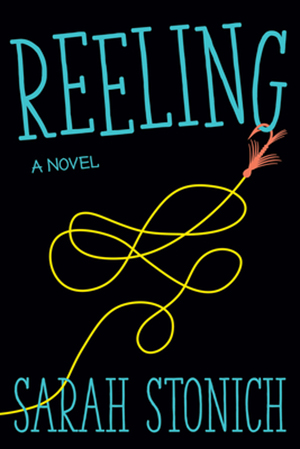 |
|
Reeling
Sarah Stonich
Reeling is a most enjoyable sequel to Fishing. RayAnne Dahl is still wrestling with the death of her grandmother and dealing with her quirky/dysfunctional family, Hal, Cassi, and her Minnesota television series, “Fishing with RayAnne.” The novel takes place in New Zealand, and if you did not want to visit there before reading this book, you will when you are finished. (It is now more firmly on my bucket list.) The trip also allows the introduction of more than a handful of amazing, vibrant, and amusing characters.
In many ways, I think the joy of this book comes from the skill with which each of the characters comes alive, even Cassi's hobbit. And there is a nod to Naledi, for those of us who are enjoying Stonich’s Northern Trilogy (Vacationland, Laurentian Divide, and...)
I probably should be sure to mention that if you are misogynist, you will truly hate this novel. |
| |
|

|
|
Lieutenant Dangerous: A Vietnam War Memoir
Jeff Danziger
This memoir recounts Jeff Danziger's time in the Army (1967–1971) and his year in Vietnam. (Yes, Jeff Danziger, the political cartoonist.) This was not a time he looks back on fondly, and he has little positive to say about the experience. There are also times when his recollections ramble, and he pauses the narrative to take some not undeserved shots at past and present politicians and military leaders.
This book was written to try to explain to today’s young, military-aged people what the war was like and what we might have learned from it. Even so, it is an excellent read for people of all ages.
It is a well-written, fascinating, and detailed memoir (though only a couple hundred pages) that shows why it is so hard for the US and its citizens to come to terms with the Vietnam War. |
| |
|
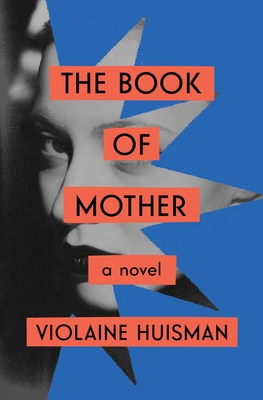 |
|
The Book of Mother
Violaine Huisman
Note: Absolutely adults-only fare.
Although the narrator of this book is named Violaine, as is the author, it is a novel. (It says so on the cover.) Violaine’s mother, Catherine, is a manic-depressive Frenchwoman who lives life without any regard to guardrails, either physical or social. Her life is, to put it mildly, chaotic; and it is presented as a “kaleidoscopic portrait.” In addition, many of the events that are recounted about Catherine come through Catherine herself or other dubious sources. But as Violaine says, “The truth of a life is the fiction that sustains it.”
For the most part, Violaine and her sister are raised by Catherine. “For the most part” perhaps implies too much, but their mother was not as present as one might expect a mother to be, particularly when she was institutionalized. On the other hand, the impact that she had on the girls’ lives is singular, and they feel as close to her as any other person does to their mother.
There is genuine love within this family but sometimes it is hard to discern because of the utterly foreign forms it may take and the trauma (both internal and external) that is endured.
Note: This book will be published October 19.
|
| |
|
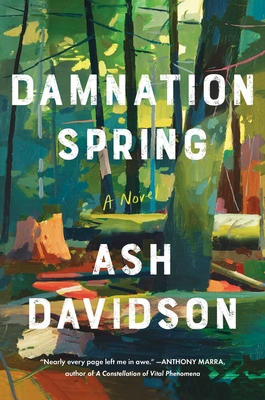 |
|
Damnation Spring
Ash Davidson
This a magnificent novel. The most appropriate term for it is “gritty realism.” If you love descriptive writing, this is your book. If you hate detail and adapting to jargon, give it a pass. (That would really be an unfortunate choice, though.)
The novel is set in 1977–1978 in northern California, in and around Klamath. Rich Gunderson is 51 and a fourth-generation logger. His wife Colleen is a 34-year-old who serves as a midwife, though without formal training. Their son Chub is an energetic 8-year-old. From them we learn about the friends, relatives, and trash who have similar long-time connections to the community.
The whole area depends on logging, and it is a company town. Everyone knows that without logging, there would be few opportunities. But all the signs of a changing world surround them. (The EPA was founded at the end of 1970. The Redwood National Park nearly doubled in size in the spring of 1978. The Department of Agriculture halted the use of 2,4,5-T on food crops in 1970. The Yurok tribe was fighting for the Klamath River fishing rights granted by the Supreme Court in 1973.) Even Rich’s homestead has been taken by the government for the park, though they can continue to live there until he and his wife die.
Damnation Spring deals with how these changes impact a family and a community not prepared for the end of their long-standing way of life. It is especially, though, a story of the power of love, with Colleen at the center. |
| |
|
 |
|
Lightning Strike
William Kent Krueger
The Cork O'Connor series continues to inform and entertain. In this prequel, Cork is 12, and his father, Liam, is the sheriff in Aurora.
In addition to being a fine mystery, we learn a great deal about how Cork began to find his place as a person of mixed heritage. And his grandmother Dilsey and others provide a personalized historical context relative to the treatment of Native Americans by both the government and the descendants of immigrants.
The story begins with Cork and a friend discovering the body of a well-respected member of the Native community. It appears a suicide, but the Native community cannot and will not accept that. And their assumption, based on decades of experience, is that Liam will make no effort to find the truth but simply write it off as just another Indian who got drunk and killed himself. Of course, as each of the story’s many layers is stripped away, finding the truth becomes complicated.
If you have read other books in this series, you probably don’t need to be convinced to read this one. If you have not, this is a fine place to start. |
|
| |
 |
 |
 |
|
|
 Pam Pam |
|
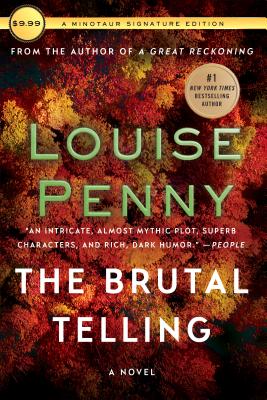
|
|
The Brutal Telling
Louise Penny
No! was my first reaction when I finished this book, and of course, I had to get the next one in the series. In this, the fourth book, we are again taken to the quiet little village of Three Pines. The death of an unknown hermit brings Gamache back to the village. We are given deeper insights into the residents of Three Pines. Penny has an amazing writing style—her ability to portray good and evil and the deepest hidden secrets of her characters is remarkable, and also haunting.
|
|
|
|
| |
|
|
|

Tim
|
|

|
|
The Poe Shadow
Mathew Pearl
Recently I’ve been reading some of Edgar Allan Poe’s short stories When I came across this book, I thought it might simply be a fictionalized biography, and that would have been fine. Much to my surprise, only a couple of pages in, I found myself caught up in one of the saddest, most mysterious, and even yet unsolved, deaths of a great American author. Poe died in Baltimore in 1849, under circumstances that, even at the time, were considered “odd.” He was found at a drinking establishment, seemingly drunk and delirious. He was moved to a public hospital, where his health continued to decline, and three days later he died. Not particularly popular as an author, reduced to destitution, and with a reputation as questionable as his death seemed to be, there was a conspicuously odd eagerness by his family to have a quiet, near secret burial, that might pass as near unnoticed as possible. Mathew Pearl has Quentin Clark (the story’s main character), a young Baltimore attorney, begin an almost compulsive investigation that even leads him to go to Paris, to see if he can enlist the aid of a real police inspector, the man on whom Poe based his character C. August Dupin. What follows is a great story, and if I did my research properly, some people now feel Pearl has gone a long way toward solving the riddle of Poe’s death.
|
| |
|
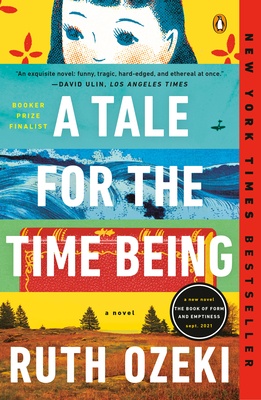 |
|
A Tale for the Time Being
Ruth Ozeki
Last month I read Ruth Ozeki’s excellent new book, The Book of Form and Emptiness, and was so moved I watched two videos on YouTube: one was an interview with Ozeki and the other, a talk given by her. Even more impressed, I’ve just finished her 2013 book, A Tale for the Time Being.
Ruth and Oliver (stand-in characters for the author and her husband) live on one of the small islands scattered in and around Puget Sound in northwest Washington State. While waking on the beach Ruth, quite by accident, discovers a barnacled plastic zip-lock bag containing objects obviously of Japanese origin. Debris swept into the sea by the great tsunami that has drifted all the way to North America, on the Pacific currents? Or is the packet the modern equivalent of a message in a bottle? One of the items is a diary written by a schoolgirl, Nao, who delves into the life story of her 104 year old grandmother, who is a Buddhist nun. Japanese history, some Buddhist philosophy, personal experience and growth, are all here for the reader’s entertainment, ‘for the time being’, as well as the masterful transportation of the reader, into the past lives of other ‘time beings.’ This book is something different… in its best sense!
|
|
|
Guest Reviewer
Nick Healy
Nick recently reviewed The Seed Keeper by Diane Wilson for The Free Press. It’s one of the books which will be discussed at our Reading Retreats later this month.
|
|
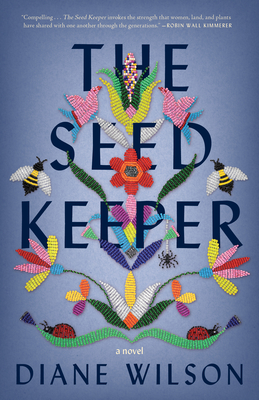 |
|
At its heart, Diane Wilson’s debut novel, The Seed Keeper, is a story about one woman and her struggle against a sense of rootlessness, but the sweep of the story addresses more than a century and a half of history in southern Minnesota while distilling it into the experiences of a single Dakota family.
The book begins as Rosalie Iron Wing, in her early 40s and recently widowed, leaves behind the farm where she has resided for more than 20 years. She sets off along icy roads in the Minnesota River valley and makes her way to the place where she lived as a child, until her father’s early death severed her from her family’s past. She feels she has come home, and in that dusty and forgotten cabin, with no heat, electricity or indoor plumbing, she intends to start over.
“She’s lost her husband. She’s lost her father. She has no connection to family,” Wilson said. “In a way, the assimilation process that I write about in the book from 1862 on forward is culminated in Rosalie’s life. She is about at the furthest edge that all of these assimilation policies and programs have carried her family to, where she believes she is the only remaining person in the Iron Wing family.”
The story moves backward and forward in time and engages with key forces that have shaped the region and its people— from the incursion of white settlers into Dakota land in the 1800s and the U.S.-Dakota War in 1862 to the farm crisis of the 1980s and the subsequent era of corporate farming. Told through the first-person voices of four Dakota women, The Seed Keeper deals with the past on a personal scale, and as always with the best sort of historical fiction, it never feels like a history lesson.
Most of the story tracks Rosalie’s life, although some scenes take place long before her birth, and in Rosalie, Wilson has created the sort of character readers will be thinking about long after they’ve finished the book. She is complicated, guarded and imperfect, but she is also persistent, strong and always interesting.
As a teenager in the late 1970s, Rosalie lives in a foster home in Mankato and hopes to save enough money to afford a place of her own as soon as she reaches her 18th birthday. She gets a job detasseling corn and ends up meeting the person she will eventually marry.
At first, it is a marriage of necessity, not of love, and Rosalie finds herself feeling isolated among a rural community of white farm families. Through a friendship with a neighbor, Rosalie learns how to plant and care for a large garden, connecting her to the earth and, in ways she doesn’t realize, to her family’s legacy.
Rosalie and her husband also struggle to navigate the challenges of being family farmers in the 1980s. They face the hardship of drought years and the arrival of an agri-business giant that drives a wedge between neighbors and contributes to broader changes that forever alter the way of life in rural Minnesota.
After her husband’s death and her return to her childhood home, Rosalie makes her way back to a community from which she’d long been cut off and, eventually, discovers she has been living for years within a short drive of a great aunt she didn’t know about. Rosalie finds Darlene Kills Deer living in a small apartment crowded with “buckets and cans packed with precious soil,” an improbable indoor garden Darlene has maintained for one reason.
“All those seeds in my closet, all that’s left of my family, they had to be planted or they’d die, just like us,” she explains.
Wilson said writing her first novel was “hugely daunting on many fronts.” But since its release in March, The Seed Keeper has enjoyed critical acclaim, including starred reviews in Booklist and Publishers Weekly and a plug in The New Yorker.
Wilson is the author of two previous books, including a 2006 memoir, Spirit Car: Journey to a Dakota Past, which won a Minnesota Book Award. A Mdewakanton descendent, she lives in Shafer (near Taylors Falls) and works as executive director of the Native American Food Sovereignty Alliance, a national organization devoted to creating sovereign food systems for Native people.
Having worked on The Seed Keeper for a decade, Wilson said, “I was hoping it would read as a book about characters and questions. It wasn’t intended to lecture about one side or another but more to raise the questions about decisions that we’ve made as human beings and what the consequences are of those decisions both for ourselves and for the seeds and the world around us.”
|
|
Would you like to be a guest reviewer?
Email Sally at sally@beagleandwolf.com |
| |
|
|
|
|
|
— page top —
|
|



 Jen
Jen

 Sally
Sally



















 She’s done it again. People who objected to the last book being set in Paris will be happy that this one is Three Pines all the way. If you don’t know what that means, I recommend you check out the series starting with Still Life. Sally and I keep saying so, and we’ll likely say so again when the next book comes out in 2022.
She’s done it again. People who objected to the last book being set in Paris will be happy that this one is Three Pines all the way. If you don’t know what that means, I recommend you check out the series starting with Still Life. Sally and I keep saying so, and we’ll likely say so again when the next book comes out in 2022. 






 Pam
Pam
